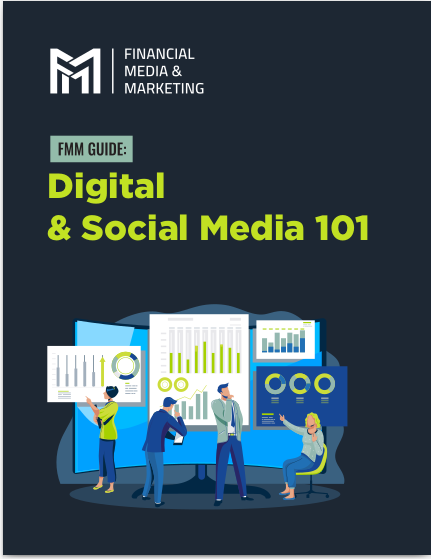Key Takeaways:
-
Most financial advisors are missing key online strategies that could dramatically improve their lead generation and client engagement.
-
Implementing these overlooked tactics can set you apart from competitors and position you as an authority in your field.
Stop Ignoring Your Digital Presence—It’s More Important Than Ever
If you’re not actively managing your online presence, you’re leaving potential clients—and revenue—on the table. The financial services industry is more competitive than ever, and your online strategy could make or break your ability to attract new leads. While many advisors think a basic website and LinkedIn profile are enough, the reality is that most are overlooking critical digital tactics that can significantly boost their visibility and credibility.
1. Leveraging SEO to Get Found Where It Matters
Your Website Needs More Than Just a Contact Page
When was the last time you Googled yourself? If your name or business isn’t showing up on the first page, you’re invisible to potential clients. Many financial advisors fail to optimize their websites for search engines, which means they aren’t showing up when prospects search for financial advice.
To fix this, focus on:
-
Using relevant keywords that your audience is actually searching for.
-
Creating high-quality blog content that answers common financial questions.
-
Optimizing meta descriptions and title tags on every page of your website.
-
Ensuring your website loads quickly and is mobile-friendly (because Google prioritizes speed and usability).
Blogging With a Purpose
A well-maintained blog isn’t just a way to showcase your knowledge—it’s an SEO powerhouse. Posting consistent, value-driven content helps Google recognize your site as a trusted source, boosting your rankings. Aim for at least two high-quality articles per month focusing on trending financial topics, long-term investment strategies, or retirement planning insights.
2. Social Media Isn’t Just for Networking—It’s for Lead Generation
Stop Posting Without a Strategy
Most financial advisors post sporadically without a clear goal, leading to wasted effort. Instead, focus on:
-
Posting valuable insights that resonate with your target audience.
-
Engaging with comments and questions to foster relationships.
-
Using polls, Q&As, and live videos to increase interaction.
LinkedIn and Beyond
LinkedIn is an obvious choice, but platforms like YouTube, Twitter, and even TikTok can help expand your reach. Video content, in particular, is a game-changer—people are far more likely to engage with a short, informative video than a block of text.
3. Building an Email List That Actually Converts
Your Website Needs a Lead Magnet
If you don’t have a way to capture visitor information, you’re missing out on potential clients. The best way to do this? A lead magnet—a free, high-value resource like a checklist, eBook, or financial planning template in exchange for an email address.
Automated Email Sequences That Keep You Top-of-Mind
Once someone joins your email list, don’t just let them sit there. Set up an automated sequence that delivers value over time, keeping you in their inbox and reinforcing your credibility. A well-structured email funnel should include:
-
A welcome email introducing your expertise.
-
A series of educational emails providing actionable insights.
-
A clear, compelling call-to-action to book a consultation.
4. Using Video Content to Establish Trust and Authority
YouTube: The Untapped Goldmine
Many financial advisors shy away from video content, assuming it requires professional equipment and a studio. But in reality, a simple smartphone and good lighting are all you need to start building an engaged audience.
Short-Form Videos Are Here to Stay
Platforms like Instagram Reels and YouTube Shorts are exploding in popularity. A quick, informative video answering common financial questions can rack up thousands of views in no time, driving more traffic to your website and social media.
Live Q&A Sessions to Engage With Potential Clients
Going live on Facebook, YouTube, or LinkedIn allows you to interact with your audience in real-time, addressing their concerns and positioning yourself as an approachable expert.
5. Prioritizing Online Reviews and Testimonials
You Need Social Proof—And Lots of It
Most potential clients will Google you before reaching out. If they don’t find glowing reviews, they may move on to a competitor. Actively request feedback from satisfied clients and showcase testimonials prominently on your website and social media.
Google Reviews Matter More Than You Think
Encourage clients to leave Google reviews. Not only does this improve your credibility, but it also helps with local SEO, making it easier for nearby prospects to find you.
Respond to Reviews—Even the Negative Ones
No business is immune to the occasional negative review. What matters is how you handle them. Respond professionally and address concerns, demonstrating your commitment to customer satisfaction.
Take Action Now—Your Online Presence Won’t Fix Itself
You don’t need to overhaul your entire digital strategy overnight, but taking small, consistent steps can make a massive difference. Start by focusing on one area at a time—whether it’s refining your SEO, posting strategically on social media, or launching your first video. The sooner you start, the sooner you’ll see results.










